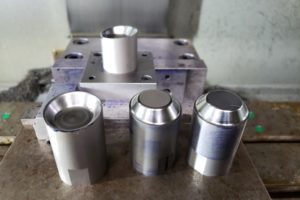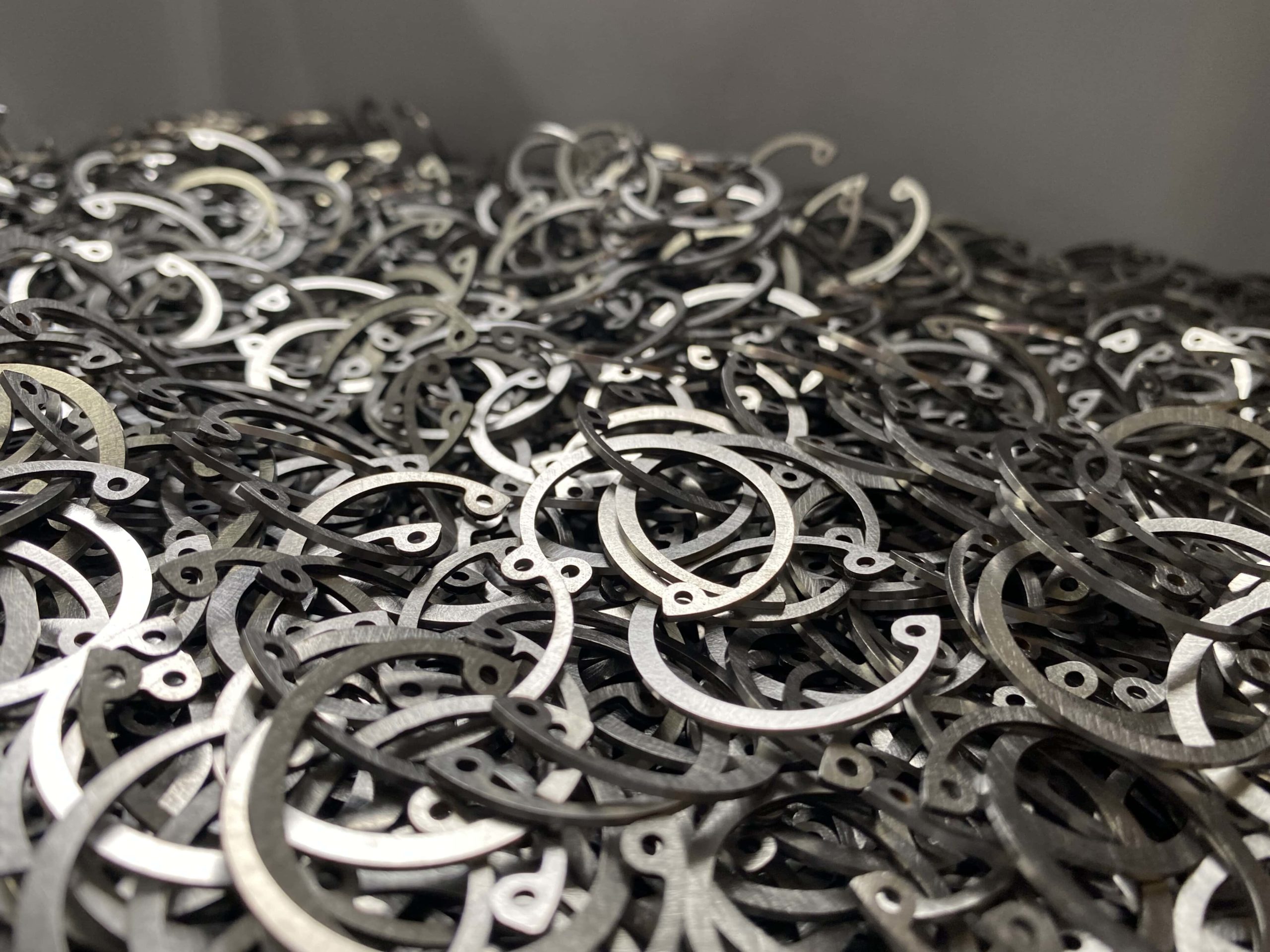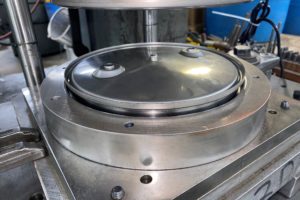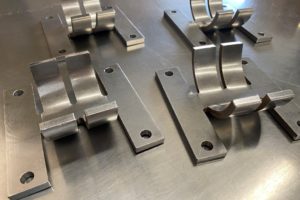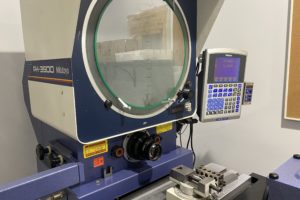Sheet metal stamping is a manufacturing technique where flat sheet metal is formed into a desired shape using a stamping press and tooling. The sheet is placed between a die and a punch, and force is applied to deform the material into the desired shape. This process is often used in various industries to produce parts and components with high precision and consistency.
At Verdugo Tool & Engineering, we offer comprehensive metal fabrication services tailored to meet our clients’ needs. Our state-of-the-art facilities and skilled team ensure the precise and efficient production of stamped metal parts. We also provide customized solutions, from design assistance to prototype development and full-scale production.
The Evolution of Metal Stamping Techniques
Metal stamping techniques have evolved significantly over time, driven by advancements in technology, materials, and industrial processes. Traditional stamping processes — such as manual press operations — have given way to automated systems that employ hydraulic, mechanical, and servo-driven presses. These modern machines provide increased precision, speed, and efficiency for producing intricate shapes.
Innovations in tooling design have also revolutionized metal stamping techniques. Computer-aided design (CAD) software enables engineers to create tooling configurations tailored to specific part geometries and production requirements. These notable developments have propelled metal stamping into a cost-effective and versatile manufacturing solution for various applications.
The evolution of metal stamping techniques is poised to continue as manufacturers explore additive manufacturing, smart automation, and digitalization. Additive manufacturing processes offer the potential to create complex tooling and prototype parts quickly and cost-effectively. Meanwhile, smart automation technologies promise to further streamline production processes.
Advantages of Metal Stamping in Modern Manufacturing
The following benefits enable manufacturers to achieve higher efficiency, quality, and competitiveness in today's dynamic market landscape:
Cost-Effectiveness
Metal stamping typically allows for high-volume production at a lower cost per unit than other manufacturing methods. Once the tooling is created, the per-part cost decreases significantly, making it economical for large-scale production runs. In addition, the automated nature of many stamping processes reduces labor costs associated with manual handling and operation.
High Precision and Consistency
Sheet metal stamping delivers excellent repeatability and precision, ensuring that each part produced is virtually identical to the next. This level of consistency is crucial for industries requiring tight tolerances and quality standards. It is also essential for achieving seamless assembly and interoperability within complex systems or assemblies.
Versatility in Material Selection
Metal stamping can be performed on various materials, including metals and alloys such as steel, aluminum, copper, and stainless steel. This versatility allows manufacturers to choose the most suitable material for their application requirements. It also enables them to meet diverse performance criteria such as strength, corrosion resistance, conductivity, and aesthetics.
Complex Geometry
Metal stamping enables the production of parts with intricate shapes and complex geometries that may be challenging to achieve through other methods. This opens up design possibilities and facilitates the creation of innovative products. Furthermore, it allows for the efficient production of components with consistent quality and precision, even when dealing with intricate configurations.
Rapid Production
With advancements in technology and automation, metal stamping processes can achieve high production speeds. This agility is crucial in industries where speed-to-market is a competitive advantage, allowing companies to capitalize on opportunities and stay ahead. Rapid production capabilities also enable just-in-time (JIT) manufacturing practices, where parts are produced as needed.
Scalability
Stamping processes are highly scalable and suitable for small-scale production runs and large-volume manufacturing. Whether producing a few prototypes or millions of parts, metal stamping can accommodate varying production needs efficiently. This flexibility in production volume enables manufacturers to respond quickly to fluctuations in demand and market trends.
Streamlined Assembly
Stamped metal parts often require minimal assembly, as multiple features and components can be integrated into a single stamped part. This reduces the need for additional manufacturing steps and assembly processes, resulting in simplified supply chains and lower production costs.
Types of Sheet Metal Stamping Processes
Here are the different metal stamping processes that we offer at Verdugo Tool & Engineering:
 Piercing
Piercing
Piercing is a metalworking operation that creates holes or openings in a workpiece using a punch and die set. This process is essential for various applications, such as adding fastening points or ventilation holes to stamped parts or components. It can be performed as a standalone operation or integrated into a larger stamping process to achieve the desired component design and functionality.
 Blanking
Blanking
Blanking is a manufacturing process in which a flat sheet is cut to produce a desired shape or outline. This is achieved using a punch and die set, where the punch shears the metal sheet to create the desired part. Meanwhile, the surrounding material is discarded as scrap. It is typically used to produce various metal components and parts, from simple shapes to intricate designs.
 Coining
Coining
Coining forms intricate details or embosses on metal surfaces with high precision. It involves pressing a metal blank between two dies, typically under high pressure and within a confined area. This process deforms the metal, producing sharp, defined features on the workpiece. Coining is commonly employed in making coins, jewelry, and complex metal components requiring precise detailing.
 Embossing
Embossing
Embossing is used to create raised or sunken designs in a material, typically paper, metal, or leather. It involves pressing the material between two dies, one with a raised design and the other with a recessed design. The pressure forces the material into the desired shape, resulting in a raised pattern on one side and a depression on the other.
 Drawing
Drawing
Drawing refers to a metal forming process where a blank piece of sheet metal is stretched into a desired shape using tensile force. This process uses a punch and die set, drawing the blank material over the die to create the desired shape. It is commonly used to produce cylindrical or box-shaped components such as cups, shells, and automotive body panels.
 Forming
Forming
Forming is a manufacturing process that reshapes and manipulates materials into required shapes and configurations. This technique applies force, heat, or pressure to deform the material without removing any material. Depending on the material’s properties and the desired outcome, forming processes can include bending, stretching, rolling, or forging.
Quality Control Measures at Verdugo Tool & Engineering
With a history spanning 65 years, Verdugo Tool & Engineering has established a reputation for excellence by prioritizing quality in every way. Our adherence to ISO 9001 industry standards shows our dedication to maintaining the highest quality and consistency in our products and services. Furthermore, we are always open to pursuing additional certifications if they align with our commitment to excellence.
Our Quality Assurance Department is at the core of our operations, with capabilities that enable us to measure tolerances down to 0.001 inch. We meticulously monitor each production stage, leveraging our department heads’ experience to discover possible improvement areas. This ensures that quality and dependability are built into the product design and production process.
Continuous improvement is also a cornerstone of our approach. We refine our processes and procedures to enhance efficiency, reduce waste, and further elevate the quality of our products and services. Through proactive preventive and corrective actions, we address any issues promptly and systematically, focusing on identifying root causes and implementing effective resolutions.
Partner With the Experts at Verdugo Tool & Engineering!
Are you looking for precision in your manufacturing processes? Verdugo Tool & Engineering is here to help! Whether you need prototypes, small-batch production, or large-scale manufacturing, we have the experience, technology, and dedication to meet your requirements.
Contact us to learn more about our services! You may also request a quote today.

